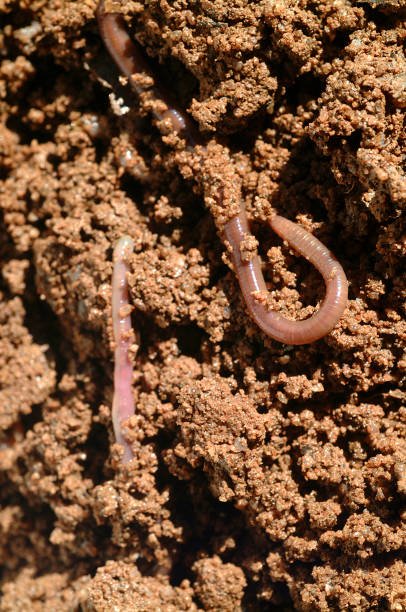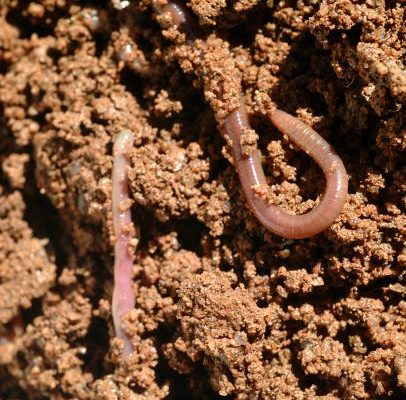
So, what exactly is a mudworm? These aren’t your typical earthworms. While they share some similarities, mudworms belong to a different group. They prefer muddy, aquatic environments, often found in a mix of fresh and brackish waters. Their wiggly presence helps keep ecosystems functioning smoothly. Let’s dive deeper to uncover more about their fascinating roles.
What Are Mudworms?
Mudworms, scientifically known as *Lumbriculus*, are a type of oligochaete worm that thrive in aquatic habitats. They can be found in ponds, lakes, and wetlands, where the sediment is rich and soft. Unlike their terrestrial cousins, mudworms can grow up to several inches long, and they come in varying shades of brown or green. With a body structure designed for burrowing, they spend most of their time hidden in mud or sand.
Here’s the thing: mudworms aren’t just hiding. They’re crucial for the ecosystems they inhabit. They feed on decaying plant material and microorganisms, making them important decomposers. By breaking down this organic matter, mudworms contribute to nutrient cycling, making essential nutrients available to larger plants and organisms.
You might be wondering how these tiny creatures manage to have such a big impact. The answer lies in their behavior. As they tunnel through the mud, they aerate the soil, which helps oxygen reach deeper layers. This process supports other organisms in the ecosystem, creating a vibrant community beneath the surface.
The Role of Mudworms in Soil Health
So, how do mudworms benefit soil health? Let’s explore. First off, their burrowing activity improves soil structure. As they move through the mud, they create channels that allow air and water to flow more freely. This is vital for plant roots, which need both oxygen and moisture to survive.
Additionally, mudworms help break down organic matter. When leaves, algae, and other materials decompose, it enriches the soil with nutrients like nitrogen and phosphorus. These nutrients are essential for plant growth and development. By contributing to nutrient cycling, mudworms play a key role in maintaining soil fertility.
Moreover, mudworms are essential for controlling soil erosion. Their tunnels help hold soil particles together, reducing the likelihood of runoff during heavy rains. This protective feature keeps the land healthy and prevents nutrient loss from the soil. Without mudworms, soil health would decline, impacting not just plants but the entire food web.
How Mudworms Contribute to Aquatic Ecosystems
Now that we’ve seen how mudworms benefit soil health, let’s shift our focus to their role in aquatic ecosystems. These little creatures are an important food source for various fish and invertebrates. When mudworms thrive, they create a reliable food supply, supporting higher trophic levels in the food chain.
In addition to being a food source, mudworms help improve water quality. Their feeding habits allow them to filter out small particles and bacteria from the water, contributing to cleaner environments. This filtering action can have a profound impact, especially in areas where pollution is a concern.
Mudworms also enhance biodiversity in aquatic systems. By providing habitats for other microorganisms and organisms, they contribute to a more diverse community. Healthy ecosystems are typically rich in diversity, making them more resilient to changes like pollution or climate shifts.
Why Mudworms Matter: Ecosystem Stability
In the grand scheme of things, mudworms may seem tiny and insignificant, but they play a vital role in maintaining ecosystem stability. Their presence contributes to both nutrient cycling and soil structure, which are critical for thriving environments.
If we think of ecosystems like a well-balanced scale, removing mudworms can cause a shift leading to instability. Soil might lose nutrients, water quality could decline, and biodiversity would suffer. Without these little creatures, both soil and aquatic systems can become degraded, leading to a chain reaction that affects all life forms.
It’s fascinating to consider how interconnected everything is in nature. Mudworms are a perfect example of how a single species can impact multiple aspects of an ecosystem. This balance is crucial not only for natural habitats but also for agriculture and human wellbeing.
Challenges Mudworms Face
Despite their importance, mudworms face several challenges. Habitat destruction due to urban development, pollution, and climate change are significant threats. When their environments are disrupted, mudworm populations can decline, leading to imbalances in both soil and aquatic ecosystems.
Pollution from agricultural runoff, which often contains fertilizers and pesticides, can degrade water quality. Mudworms are sensitive to these changes, and exposure to harmful chemicals can impact their survival.
Additionally, climate change is altering freshwater environments, affecting the temperature and oxygen levels that mudworms rely on. As temperatures rise and water levels fluctuate, these creatures may struggle to adapt, leading to diminishing populations. Protecting their habitats is essential to ensure they continue to thrive.
How to Support Mudworm Populations
So, how can we support mudworm populations and, in turn, the ecosystems they help sustain? There are several steps we can take. First, practicing sustainable agriculture can significantly reduce runoff. This includes using fewer chemicals and implementing buffer zones around water bodies.
Promoting wetland restoration is another key action. Wetlands provide critical habitats for mudworms and other aquatic organisms. Preserving these areas can bolster mudworm populations and enhance overall ecosystem health.
Educating others about the importance of mudworms can also make a big difference. By spreading awareness, we can encourage more people to take action in protecting our natural resources. Simple steps—like reducing plastic pollution and properly disposing of waste—can have ripple effects on these ecosystems.
Ultimately, fostering respect for all creatures, no matter their size, is essential for maintaining the balance of our ecosystems.
Mudworms might not be the most glamorous creatures in nature, but they play a vital role in both soil and aquatic ecosystems. From improving soil structure to serving as a food source for various organisms, these little creatures are essential in maintaining the health of our planet.
By understanding their contributions and the challenges they face, we can take steps to protect mudworms and the environments they inhabit. It’s fascinating how interconnected our world is, and these tiny heroes remind us that even the smallest beings can have a significant impact. Let’s do our part to support them and ensure a thriving ecosystem for future generations.

